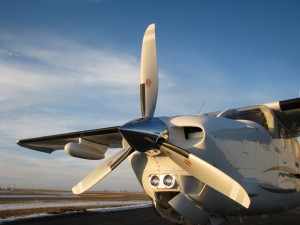 NOTE: If you haven’t already, please log in using the form on the right of your screen. If there’s no login box, then you’re already logged in!
NOTE: If you haven’t already, please log in using the form on the right of your screen. If there’s no login box, then you’re already logged in!
If you love airplanes, gadgets and space ships, and you also love electronics, engines, radios, storms, gyroscopes, and everything that flies, then this is the area of science for you.
Kids will learn from real pilots how to navigate using aircraft instruments, how propellers and jet engines work, and make their own flying machines during class. They'll also take their first flight lesson right from home!
We're going to cover the following key concepts in this course:
|
|
[am4show have='p133;' guest_error='Guest error message' user_error='User error message' ]
Step 1:
To get started learning, print out this worksheet. You'll be using it throughout the course. It contains questions and answers for you to fill out as you work through each lesson. You'll also find a glossary of aviation vocabulary here.
Step 2:
Watch the videos and do the experiments (in order):
Lesson 1: Flying Cars
Lesson 2: Introduction
Lesson 3: From Preflight to Takeoff
Lesson 4: Aircraft Instruments
Lesson 5: From En Route at Altitude to Landing
Lesson 6: Atmosphere and Pressure
Lesson 7: Aerodynamic Forces
Lesson 8: Airfoils and Wing Shape
Lesson 9: Atmosphere and Pressure
Lesson 10: Aerodynamic Forces
Lesson 11: Airfoils and Wing Shape
Lesson 12: Stability
Lesson 13: Center of Gravity and Center of Lift
Lesson 14: Stability, Maneuverability, Stalls and Spins
Quick Links:
Aviation 2
Aviation 3
Lesson 1: Flying Cars
For about as long as we’ve had cars on the road and planes in the sky, people have wanted to put the two together and make flying cars. Let me show you what people have done over the years.
Materials:
- index card
- straw
- scissors
- tape
Lesson 2: Introduction
If you love airplanes, rockets, and space ships, and you also love electronics, engines, radios, storms, gyroscopes, and everything that flies, then this is the area of science for you. Kids will learn from real pilots how to navigate using aircraft instruments, how propellers and jet engines work, and make their own flying machines during class. They'll also take their first flight lesson right from home!
Lesson 3: From Preflight to Takeoff
Learn how to start the airplane and drive it to the runway, takeoff and climb up to altitude.
Lesson 4: Aircraft Instruments
The instruments on board help us not only know where we are, but also where we're headed, what the weather is like, how high we are, and os much more. With just a glance at six instruments, you can tell what the airplane is doing in in the air so you can fly it safely.
Lesson 5: From En Route at Altitude to Landing
Learn how to start your descent into your desitnation airport, and what's invovled with landing the airplane.
Lesson 6: Atmosphere and Pressure
As you go up, the pressure decreases because there’s less air pushing down on top of you. This air pressure not only pushes down, it also pushes up, around, to the left, right…same air ps everywhere in shower, under bed, left nostril – 14.7 psi (pounds per sq inch) at sea level. Mt Everst is a little less.
Materials:
Materials:
- two empty soda cans
- big handful of straws (watch video)
Lesson 7: Aerodynamic Forces
Airplanes experience four aerodynamic forces during flight: lift, weight, thrust and drag.
Materials:
- funnel
- ping pong ball
Lesson 8: Airfoils and Wing Shape
Airfoils are designed to generate as much lift as possible with as little drag as possible.
Materials:
- index card
- tape
Lesson 9: Structure of Airplanes
The modern aircraft has five basic components: wings, landing gear, powerplant (propulsion system), fuselage (body of the airplane), tail structure (empennage).
Materials:
- sheet of balsa wood (about 3" x 18" long)
- two 1/8" x 3/8" x 12" long balsa wood pieces
- paper clips
- scissors
- rubber bands
- razor
- masking tape
Lesson 10: Propellers and Pistons
Some aircraft use piston engines, and those pistons can be arranged in four ways: radial, in-line, opposed and a "V“, like in your V-8 SUV.
Lesson 11: Supersonics, Gliders, and Jet Engines
There are several types of jet engine: ramjet, pulsejet, turbojet, turbofan. Turbojets and turbofans are the most common you’ll see on aircraft.
Materials:
- paper
- tape
Lesson 12: Stability
Positive stability means that the airplane is designed so that if the pilot jams on the controls during straight and level flight (in other words, pitch up hard), and then lets go, the airplane will more or less return to straight and level flight.
Materials: sheet of paper
Materials: sheet of paper
Lesson 13: Center of Gravity and Center of Lift
Center of pressure is aft of the center of gravity for positive stability.
Materials: sheet of paper
Materials: sheet of paper
Materials: hair dryer and a pencil
Lesson 14: Stability, Maneuverability, Stalls and Spins
In airplanes, it’s a trade-off between the two: stability and maneuverability. You can’t have both – it’s either one or the other, or some of both.
Materials: sheet of paper
Materials: a paper airplane that doesn't work right
When you've completed all the lessons on this page, you're ready for Aviation 2!
[/am4show]
